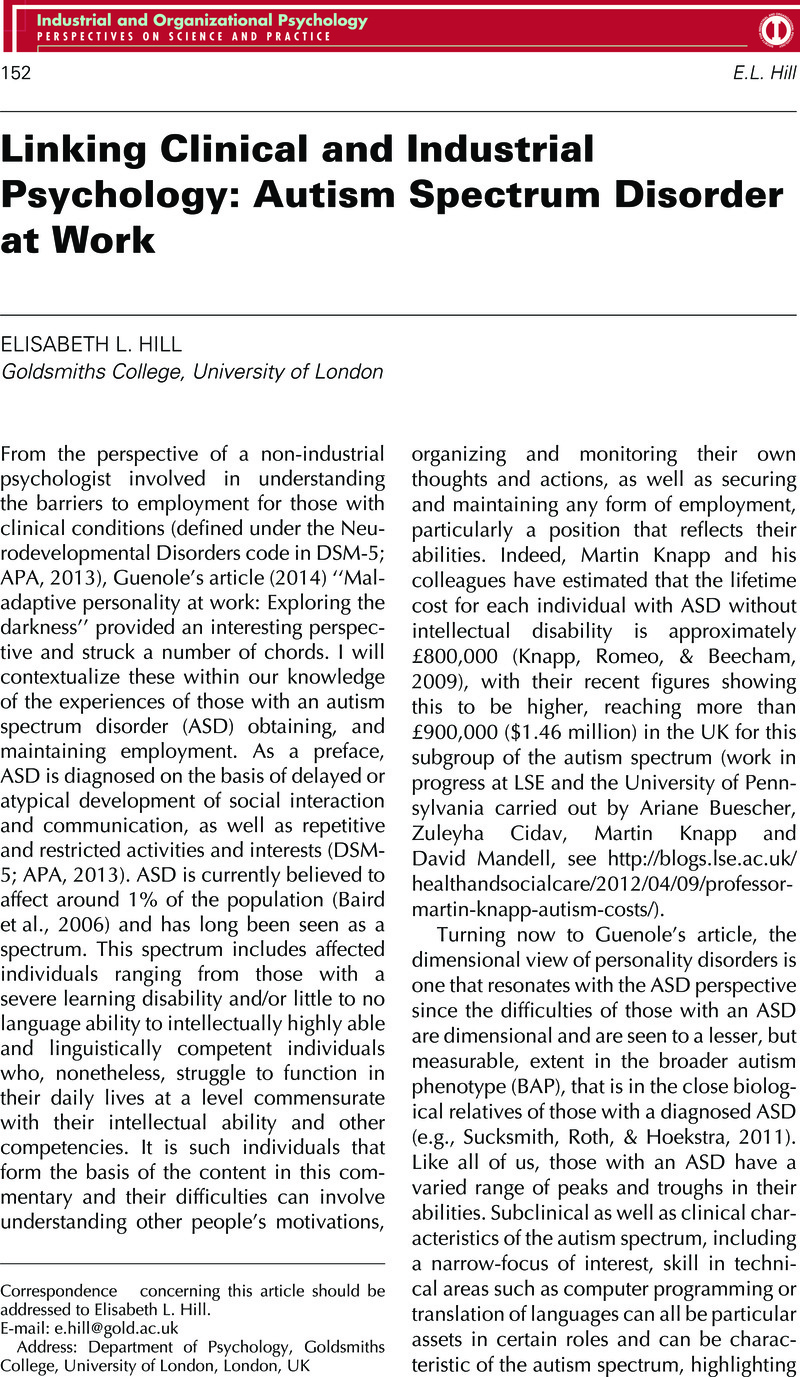Crossref Citations
This article has been cited by the following publications. This list is generated based on data provided by Crossref.
Whelpley, Christopher E.
Banks, George C.
Bochantin, Jaime E.
and
Sandoval, Rosalyn
2021.
Tensions on the spectrum: an inductive investigation of employee and manager experiences of autism.
Journal of Business and Psychology,
Vol. 36,
Issue. 2,
p.
283.
Ezerins, Maira E.
Simon, Lauren S.
Vogus, Timothy J.
Gabriel, Allison S.
Calderwood, Charles
and
Rosen, Christopher C.
2024.
Autism and Employment: A Review of the “New Frontier” of Diversity Research.
Journal of Management,
Vol. 50,
Issue. 3,
p.
1102.
Rollnik-Sadowska, Ewa
and
Grabińska, Violetta
2024.
Managing Neurodiversity in Workplaces: A Review and Future Research Agenda for Sustainable Human Resource Management.
Sustainability,
Vol. 16,
Issue. 15,
p.
6594.



